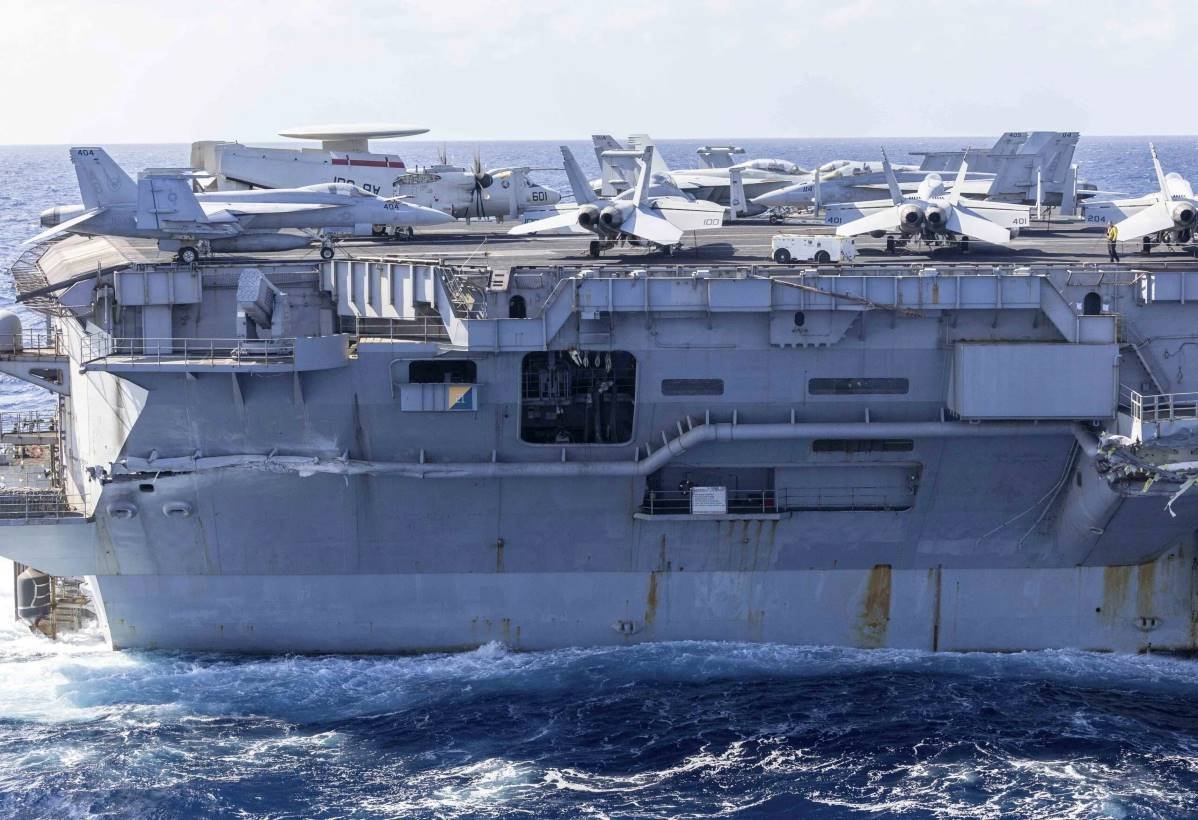Collision Incidents Cause Noticeable Damage to USS Harry S. Truman
Recently released images of the U.S. Navy warship, the USS Harry S. Truman, reveal significant damage sustained after colliding with a mercantile vessel last week. The nuclear-powered aircraft carrier, with an impressive length of 1,100 feet, took a notable beating to its exterior starboard quarter during the mishap.
Post-incident, the warship had to undergo repairs and was subsequently docked at the U.S naval station in Souda Bay, Greece. The shots, made public by the Navy on Saturday, give a glimpse into the damaged areas that included the outer wall of two storage units and an area dedicated to maintenance tasks.

Impact of the Incident on Combat Capabilities & Repair Plans
Despite visible damage, the essentials of the ship remain intact and unaffected. The Navy confirmed in a statement that the accident did not compromise the ship's combat ability. It has been engaged in flight functions since the collision incident on Wednesday.
Preparing to mend the situation, a group that includes structural engineers and naval architects is devising a comprehensive repair plan. The Navy has refrained from announcing a potential timeline for implementing this plan, keeping information about the duration of repair work under wraps.
Details of the Collision and Its Ramifications
In the Mediterranean Sea, near Egypt's Port Said, the Truman made an unfortunate collision with the Besiktas-M; a 617-foot, Panamanian-flagged carrier. This collision occurred in the congested waters close to the entrance to the Suez Canal.
While the collision caused damage to both vessels involved, it fortunately did not lead to injuries aboard either ship as confirmed by the Navy post-incident. This occurrence happened near a popular anchorage area for ships crossing the canal, highlighting the hazards of marine navigation in crowded waterways.
Expert Views on Risk Factors & Operational Status of the Warship
Carl Schuster, a former U.S Navy captain and a current instructor at Hawaii Pacific University, comments on the inherent risk of navigating in restricted waterways due to the limited space for maneuvering. He explains, "Both ships need about one nautical mile to stop. Quick endangerment is possible due to minor navigation errors, such misinterpretation of the other ship's movements, or delay in decision-making."
Prior to the unexpected incident, the Truman was involved in a working port visit to Souda Bay following two months of combat missions in the Central Command location. During this period, multiple strikes were conducted against Houthi rebels in Yemen. Air strikes were also launched against ISIS in Somalia, according to the Navy.
Despite the incident, Rear Adm. Sean Bailey, the commander of Truman's carrier strike group, assures that the Truman remains operational within the region. The group includes a guided missile cruiser and three destroyers. Bailey emphasizes the commitment to responding to any challenges in this dynamic and globally significant security environment.




Recommended Comments
There are no comments to display.